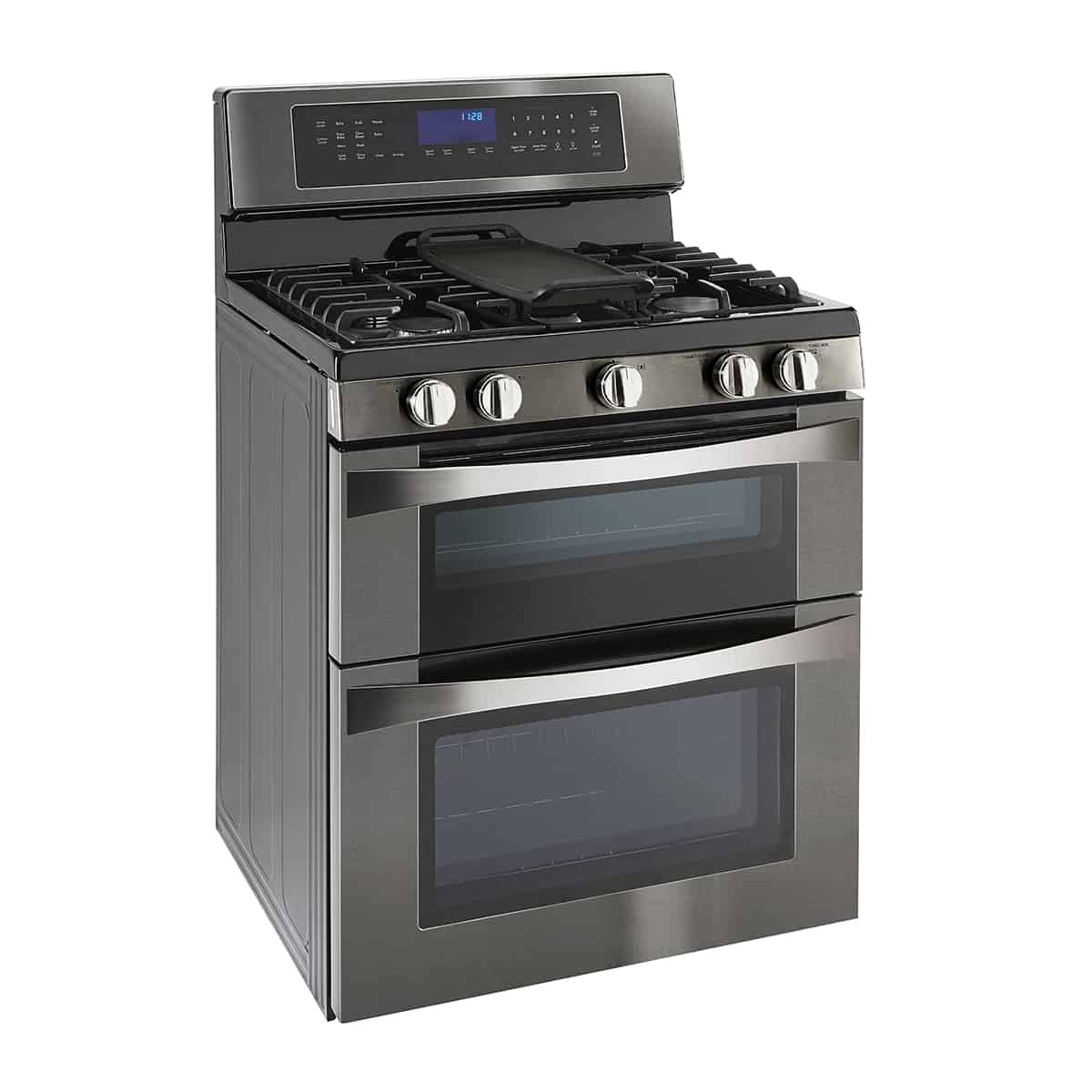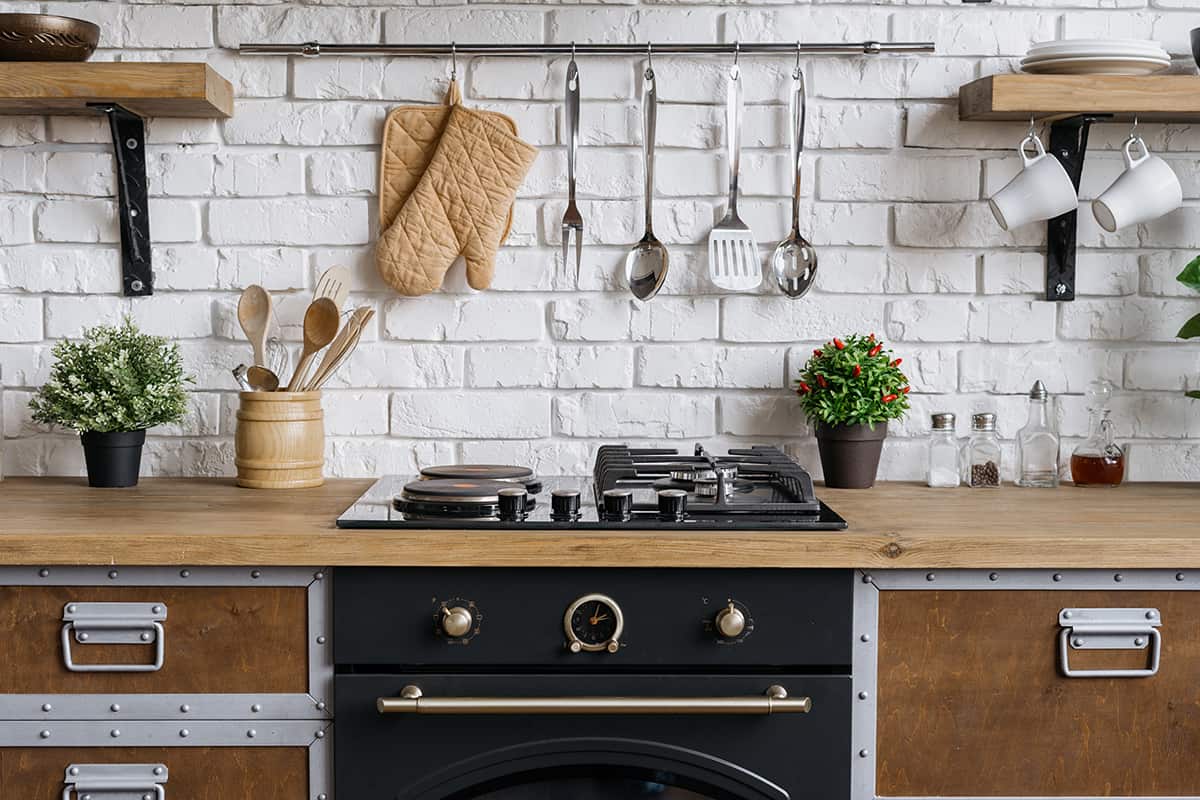Although many of us wouldn’t give the weight of a stove a second thought, there will come a time when you wish you purchased a lighter stove. After all, moving heavy appliances to clean behind them can be a literal pain in the neck and back. So, how much does the typical stove weigh?
A stove and oven range will usually weigh between 100 and 300 pounds. Portable stoves will weigh as little as 2 pounds. The exact weight figure depends on the type of stove, its size, how many burners it has, and what features it comes with.
In this guide, I’ll describe why you should know your stove’s weight, as well as how the aforementioned factors can affect the overall weight of a stove.
Why Does the Weight of a Stove Matter?
For the most part, it doesn’t. You can live a happy, fulfilling life without paying attention to the pound or kilogram figure of your stove. However, if you plan on doing any of the following things, it’s worth figuring out how much your stove weighs.
Moving homes
If you plan on relocating to a new home or apartment, then you need to find a trailer that doesn’t just accommodate the size of your kitchen appliances but can also support their weights. Generally speaking, the larger an oven is, the heftier it will be, and the more challenging it becomes to load and unload the appliance.
Cleaning
I’m not referring to cleaning the top of your stove but rather cleaning behind and underneath it. To access these normally inaccessible parts of your stove, you will need to pull it away from your kitchen wall or lift it from the kitchen counter. It will be much easier to clean these parts if your stove is lighter.
Ordering a new stove online

Sometimes, you can get much better deals on kitchen appliances if you scour the internet. However, any savings you hoped to make might be lost when it comes to shipping and handling fees. So, if you have your eye on a stove online, you should know that it generally costs more to ship heavier stoves than it does lighter ones.
How Much Does a Stove Weigh?
So, after learning the importance of a stove’s weight, it’s time to discuss the actual weight of a stove.
On average, stove and oven ranges will weigh anywhere from 100 to 300 pounds. Some models, specifically those with multiple burners, can weigh upwards of 600 pounds! Portable stoves, on the other hand, weigh much less—usually between 2 and 20 pounds.
So, what’s with the wide-weight variance? In reality, the weight of a stove depends on several factors, including what type it is, how large it is, how many burners it comes with, and what features it packs. below, I’ll describe how each of these factors affects a stove’s weight.
Type
There are four types of stoves to choose from—gas, electric, induction, and wood.
Gas stoves are usually large, metallic appliances that weigh considerably more than the other stove types. They come with large bodies to encase all of its inner workings, of which there are too many to name. In addition, their cast-iron grates can be quite hefty, and the more it comes with, the heavier the stove becomes.
Electric stoves are similar to gas stoves in terms of style and design. The exception is glass-top electric stoves, which do not come with large bodies or exposed heating elements. Due to their slimness, glass-top electric stoves can weigh nearly as much as a portable gas stove.
Induction stoves only come with a single burner. While it will be made almost entirely out of metal and have a ceramic plate, its tiny size in comparison to traditional gas and electric stoves makes it incredibly compact and lightweight.
Wood stoves are more common in log cabins than they are in homes and apartments. They will be made entirely out of metal to withstand the extreme heat of burning logs, so it can take multiple sets of hands to transport such a stove from place to place.
Size
In general, the type of stove will determine how large it is. However, there are other sub-factors that can affect how large or small a stove is—e.g., the number of burners, what features it comes with, etc.
Stoves are usually measured by their width or the distance from one of the sides to the other. As such, a 24-inch stove would weigh considerably less than a 30-inch stove, which weighs less than a 48-inch stove, and so on.
Number of burners
Some stoves come with 2 burners while others come with 3 or 4. Some of the largest stoves will come with at least 6 burners, but these stoves are usually reserved for restaurant and hotel kitchens, as well as food YouTuber’s offices.
Features
Usually, the more features a stove comes with, the heavier it will be. That is because the stove needs to be larger to accommodate the additional components that add safety and convenience to the appliances. Such features that can add significant amounts of weight to an oven include:
- Overhead hood
- Downdraft vent system
- Flip-down cover
- Oven
- Backguard
- Telescopic shelves
- Center grates
Can You Transport a Stove in Your Car?
If you don’t want to purchase a stove online, but rather from a brick-and-mortar location, then you have to think about how you’re going to transport it back to your residence. Some retailers will have complimentary delivery services, but they follow their own schedules. So, is it safe to transport a stove in your car?
Yes, it is, as long as there’s enough for it to stand upright or lie down on its side. Unlike refrigerators, stoves do not have liquids that need to settle prior to installation.
However, you should not lie the stove down on its back since it could warp the gas valve line or other metal components. You don’t have to be as delicate when transporting wood stoves since those things are designed to take a beating.






